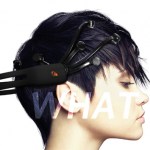Function
A few months ago, I attended Cyborg Camp in my hometown of Portland, Oregon. Cyborg Camp is an "unconference," basically a room full of cyberpunks, mega-nerds, and aspirational coders that gather in an office building to talk about the "future of the relationship between humans and technology." This event deserves a separate entry, but for now I'd like to recall a particularly evocative thing: that the most heartbreaking thing I saw at Cyborg Camp was an adult man hopelessly tangled in a web of cables.
It was his own off-the-shelf wearable computing system, a gordian thing connecting his…
There is something I am working on that will need some type of angle sensor. I am going to use a potentiometer. First, who came up with that name? Isn't this name the same as a voltmeter? Something is wrong with that name. How about we just call it a variable resistor or something like that?
These things are pretty easy to find if you have some old electronic stuff. Here is one I found in our "junk room".
This one was used in a lab as a variable resistor with plugs built in. The normal potentiometer has three connections; one for each end and one for the variable position in the…
In a [previous post](/dotphysics/2008/09/basics-making-graphs-with-kinematics-stuff-part-ii/), I talked about how to plot kinematics data with a spread sheet and how to fit a quadratic function to the data. In the back of my head I remember "Don't trust Excel". I seem to recall someone claiming that Excel did not do a proper fit. To test this, I collected some data and used several methods to fit the data:
MS Excel's built in function fitting
Using the spread sheet (Excel) to manually calculate the best fit parameters
Vernier's Logger Pro (version 3.6.1)
Plot 0.997 - http://plot.micw.eu…
